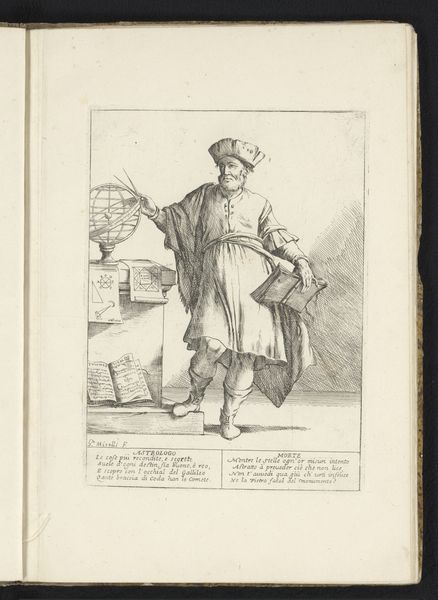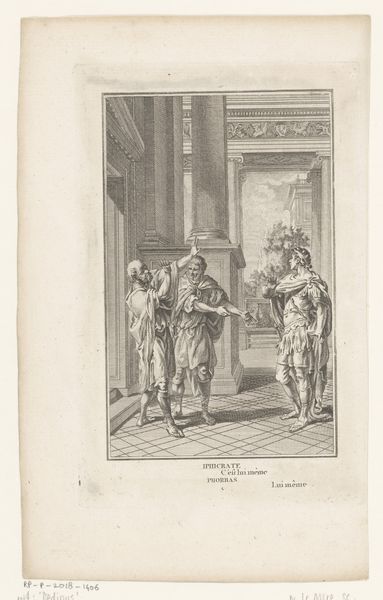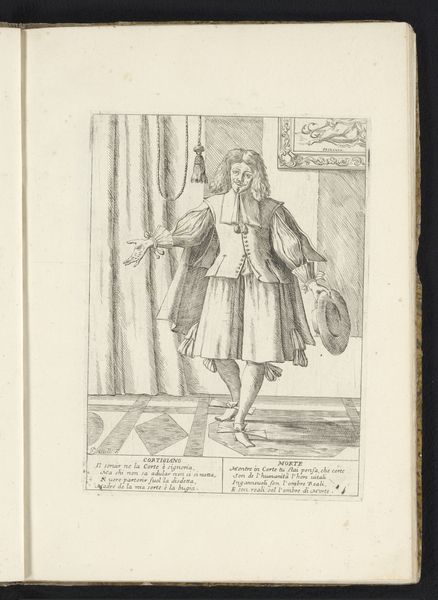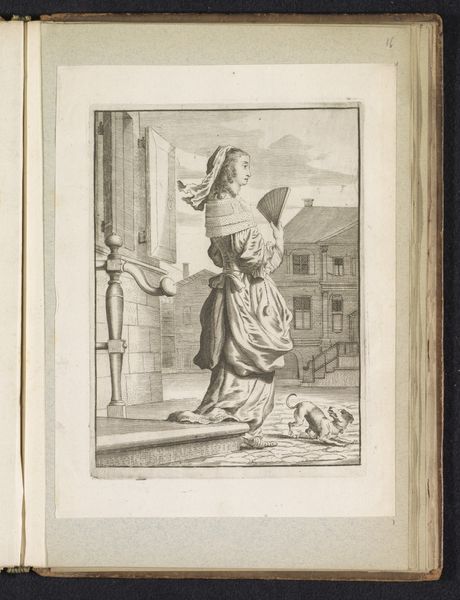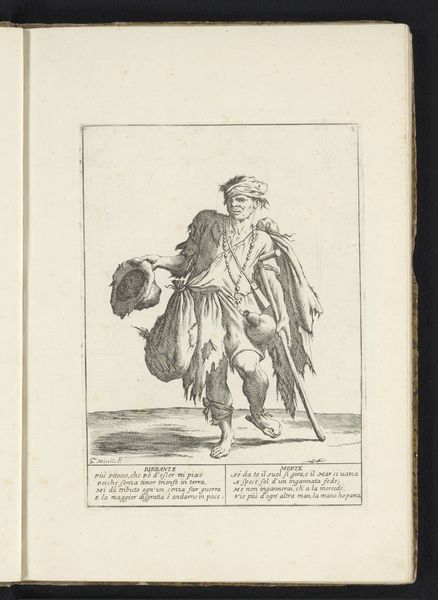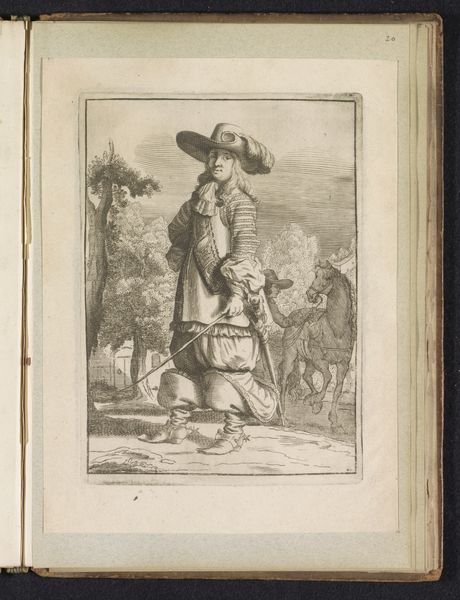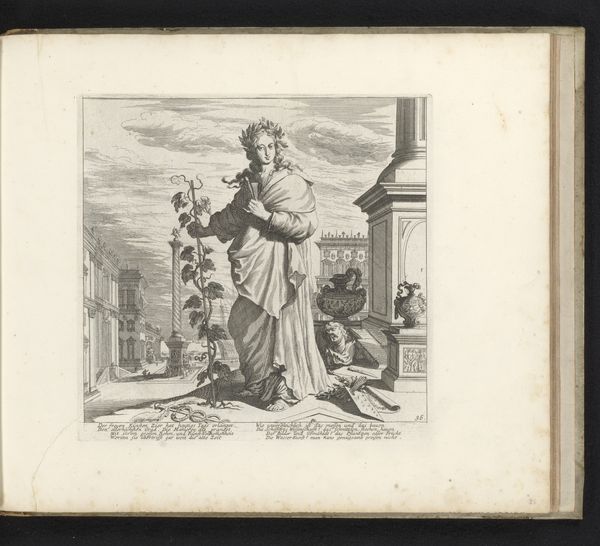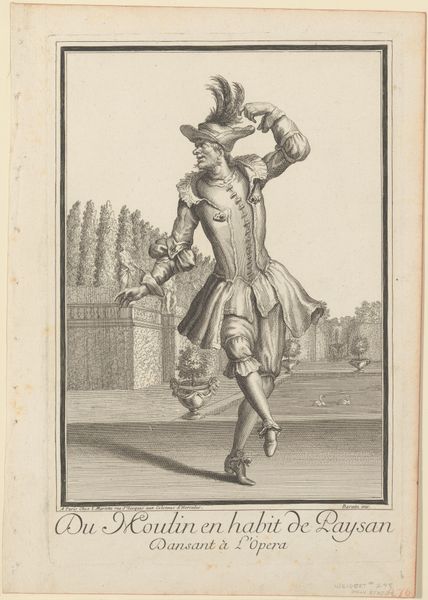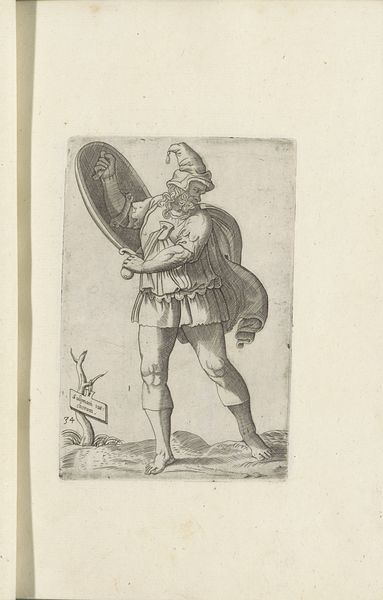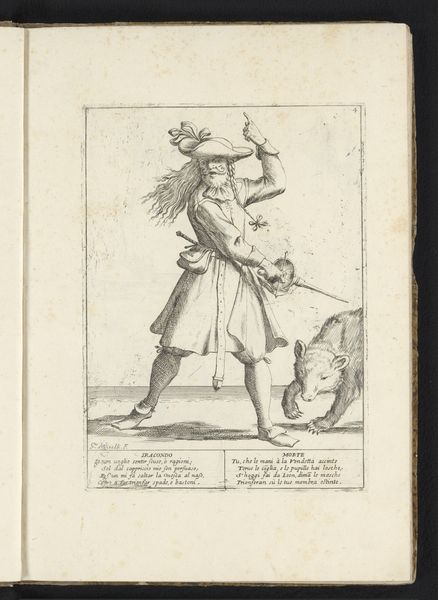
Heer, elegant gekleed volgens de mode van omstreeks 1660, staand voor de stoep van een huis c. 1660
0:00
0:00
janvantroyen
Rijksmuseum
print, engraving
#
portrait
#
baroque
# print
#
figuration
#
coloured pencil
#
history-painting
#
engraving
Dimensions: height 169 mm, width 124 mm
Copyright: Rijks Museum: Open Domain
Jan van Troyen made this engraving of a fashionably dressed man around 1660. Consider the setting: our subject stands on the stoop of a house. In the Dutch Republic, this kind of domestic space was becoming newly important. These homes weren't just private residences; they were also stages upon which wealthy merchants displayed their status and taste. The man’s clothing creates meaning through visual codes. Note his elaborate sash and the fashionable cut of his doublet and breeches. These details tell us much about the man’s social position. The Dutch Republic was a highly stratified society, and clothing was one way that people signaled their place within it. To understand the cultural role of art, we can investigate sources from the period. Paintings, prints, and fashion plates can tell us much about the social values of the Dutch Republic. Art is always contingent on social and institutional context.
Comments
No comments
Be the first to comment and join the conversation on the ultimate creative platform.
